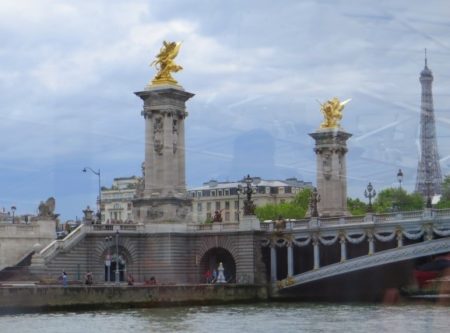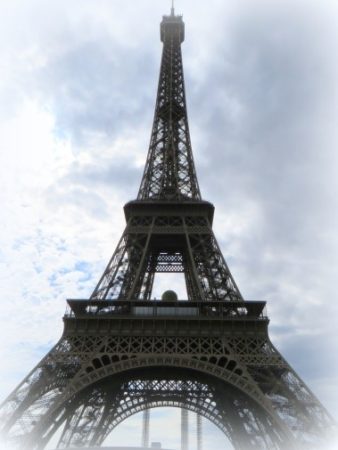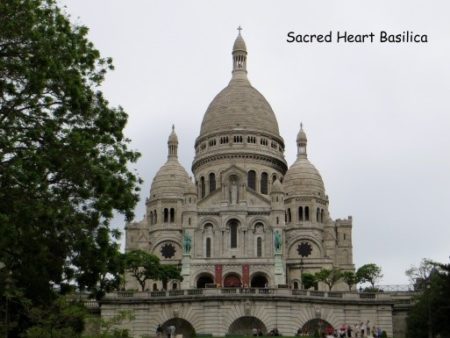Paris, mot magique…! (magic word) Two nuns about to discover the enchantress city. What was it appealed to one most? The Grands Boulevards, the tree-lined avenues, the magnificent fountains; for the student of history, the evocative power of even the least significant of monuments; or perhaps, it was the people we met – not merely French, for Paris, for us, was L’Institut Catholique, where representatives of sixty-five nations followed the Cours Université d’Été (University summer course) of 1966.
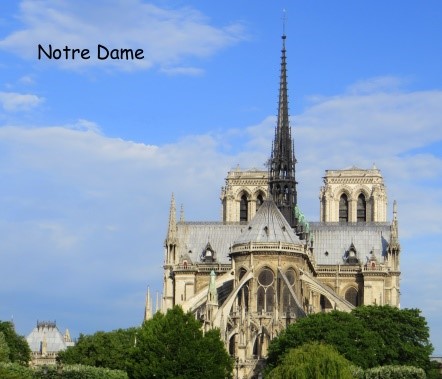
Once one had grown accustomed to the tempo of Parisian traffic a brisk walk in the morning air brought one to the ancient portals of No. 21 Rue d’Assas. There, in the heart of the city, within the shadow of the Carmelite Church, a beautiful reminder of past glory, the University opened its doors to students from every European country, Canada, USA, India and the Far East. Lectures continued from 9 am to 12 noon. During the intervals, there was many opportunities for a stimulating exchange of ideas, which made us all fellow students of the great world, and convinced one ultimately of the truth, already deduced in the lectures on literature, that humankind everywhere is essentially the same.
In retrospect, a series of incidents come to the surface from the subconscious ..the soft silver notes of a Belgian girl-teacher in one’s ears even before the 9 am lecture: “Sous le bleu d’un ciel Irlandais” (Under the blue of an Irish sky) which incidentally had won the Eurovision song contest for France a few years previously in 1964; (click here to listen to the song and read the lyrics in English) the keen thrill of the quick repartee from the unknown priest, who on the stone steps of the main staircase answered our query: “D’où venez-vous mon père?” (Where do you come from, Father?) – “Je viens, ma soeur, de Contae na hIarmhidhe! ”(I come, Sister, from Co Westmeath!); the Portuguese nun who does all her teaching through French in her Congolese University and whose experiences during the then recent insurrections in that country prove that even in the twentieth century the challenge of martyrdom is not unknown; the peculiar Hibernian flavour of the surname Mac Firbhisigh which caused agonies of enunciation to the Professeur Française at roll call; the gentle Brazilian priest whose zeal and dedication to the conversion of his countrymen and their preservation of the faith was a joy and an inspiration; the lovely Korean girl, student at the Sorbonne, who spoke impeccable French, in whose company we discovered the little indispensible places like “le bureau du tabac” for one’s stamps or the more worthwhile irresistible book shops; and could one ever forget the charming American grandmother – forty plus and fancy free, who joined us on excursions just to prove to her Moriarty kinsfolk in Kerry and USA that “age could not wither her, nor custom stale her infinite variety”.
The afternoons were devoted to “discovering” Paris – the palaces, museums and art galleries. On one occasion we were accompanied by an incomparable guide, whose “goût bien français”(very French tendency) for giving details, left one fully informed, albeit lost, in a haze of kings and queens, commoners seeking redress or emperors starting a new regime. Driving back from Fontainbleau through the celebrated forest where the kings of France hunted the stag and wild boar one becomes aware that you can scarcely go anywhere in Paris without a sense of history. A call at the palace of St. Germain was of particular interest to us Irish since Louis XIV gave this palace to the Stuart kings, as a temporary residence, after the sorrowful defeat at the Boyne. Was it a coincidence also that it was from the autobus on that return journey that we glimpsed the plaque with the name of Oscar Wilde designating the hotel where he had laboured out his exile? Chopin, we were reminded, played his nocturnes in the Palais de Tuileries and Berlioz’s famous Requiem Mass was first heard in Napoleon’s chapel in Les Invalides.
Unforgettable in its splendour was the panorama over the city from the terrace of the Sacred Heart Basilica at the summit of Montmartre. Here, raised aloft as it were in benediction over the city, the Blessed Sacrament is exposed day and night. Unobtrusively, the perpetual rows of worshippers, which count men only during the night watches, succeed each other – silent witnesses to the restlessness of a great city seeking, in the quiet of prayer, a haven of peace. Strange too, that Our Lord should have chosen this city……the hour midnight….the year 1830…..to enter into intimate conversation with the humble and obscure Catherine Labouré.
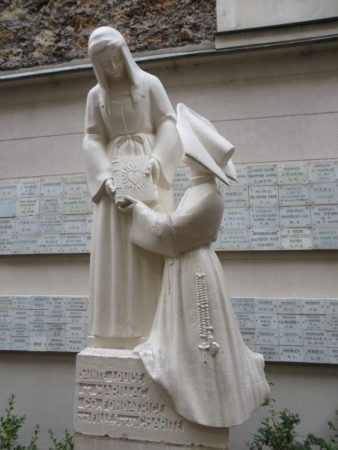 Statue of St. Catherine Labouré outside the Chapel of Our Lady of the Miraculous Medal
Statue of St. Catherine Labouré outside the Chapel of Our Lady of the Miraculous Medal
Outside the chimes of midnight are heard, life is seen at its most colourful and carefree. The revellers enter the wine cellars of the Quartier Latin, their dance continues until the dawn. Two worlds….a part of the great mystery of life.
The cathedral of Chartres draws the visitor like a magnet. One of the most magnificent monuments in the world, this masterpiece of Gothic art rises proudly from the endlessly flat surrounding terrain. The spire of the cathedral, seen from afar, reminded us of those medieval pilgrims for whom the sight of the spire inspired a song of hope. They had arrived at last at the end of their pilgrimage. Mass in the crypt of the cathedral linked up for us, in some mysterious way, the catacombs, the medieval pilgrims and the modern pilgrims. Does it seem too much to hope that the pilgrim of today’s complicated world may be no less successful than those of former ages in bearing witness to Christ?
And so we had come to the end of our course of studies. “Les maisons, les avenues, les routes sont fugitives, hélas comme les années.” (Houses, avenues, roads/pathways are fleeting, alas like the years.) We had come to know something of the joie de vivre of warm-hearted Paris. Walking home in leisurely fashion from L’Institut Catholique to Notre Dame de Sion, enjoying the gentle breeze, the classic beauty of the Luxembourg Gardens, the picturesque attractiveness of old houses and quaint dwellings, even the chic fashions of the Grands Boulevards, seeing again in the inward eye, the old world courtesy of the civic reception which, as an international group, we were accorded in L’Hôtel de Ville….the pomp and panoply of ancient France: the gorgeous castle of Azay-le Rideau rising out of the water like a bird in flight; the spectacle of Son et Lumière at Chenonceau in the Val de la Loire; Mont St. Michel in Brittany, lovely and austere, as enduring as culture itself, which is what remains when all else is consigned to oblivion. Without claiming to be aesthetic, one could not help thinking, during these rêveries ambulatoirs (walking reveries) for which Paris is uniquely famed, that these scenes would come to life again at odd moments of recollected tranquillity down the corridor of a memory.
Loreto Bugler rsm
Southern Province

